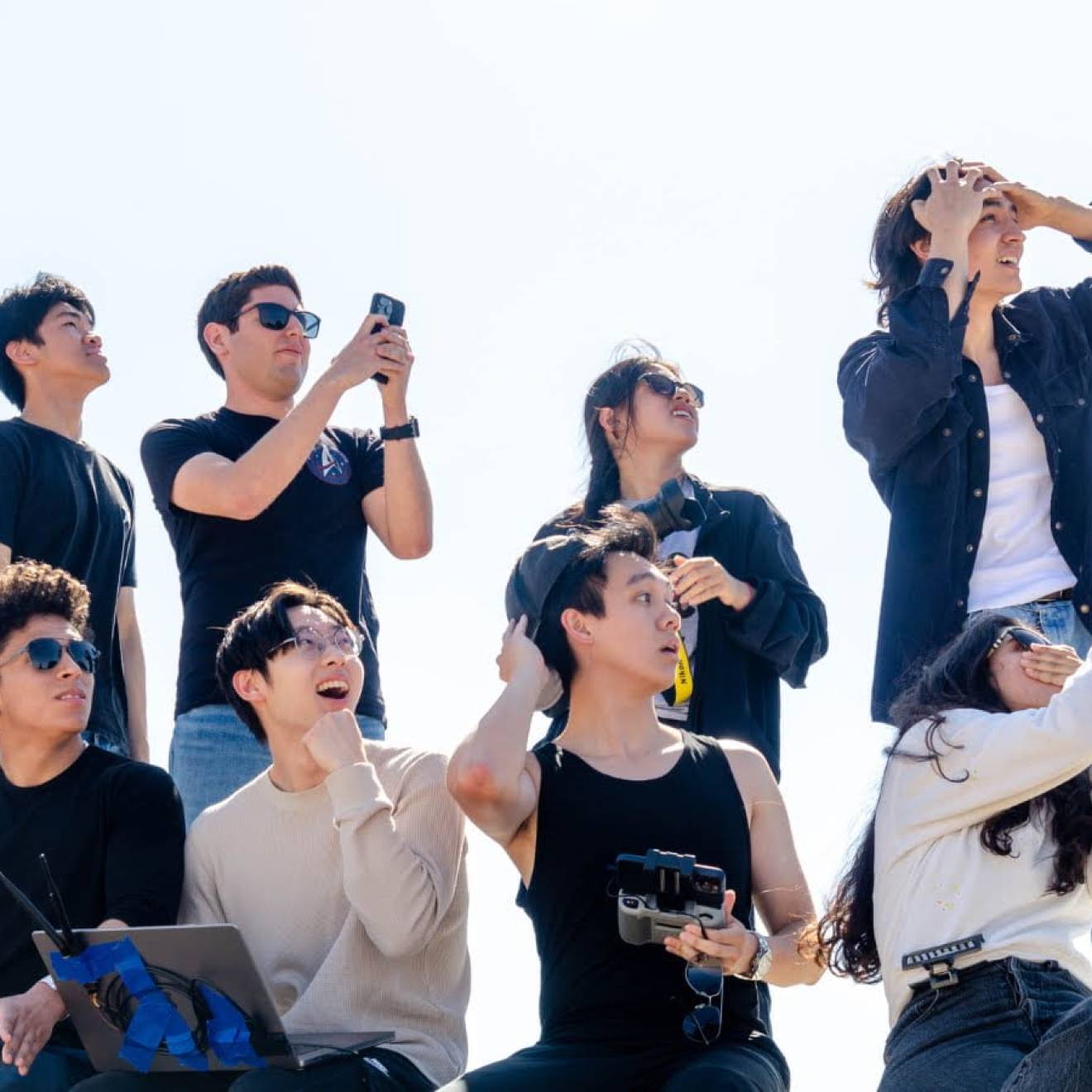Robert Sanders, UC Berkeley
The Eclipse Megamovie project has released an app that makes it easy for citizen scientists with smart phones to photograph the Aug. 21 total solar eclipse and upload the images to the project, a collaboration between the University of California, Berkeley, and Google to provide a lasting photo archive for scientists studying the sun’s corona.
The Eclipse Megamovie Mobile app, created by Ideum, is available for Android phones through Google Play store and for iPhones through iTunes’ App Store.
Credit: Roxanne Makasdjian and Stephen McNally
When downloaded and installed, the app walks users through a simple process to point your smart phone at the sun using an appropriate filter to protect the camera’s sensors. Once protected and pointed properly, the camera determines where you are and automatically starts taking photos of the sun 15 seconds before totality at your location, snaps periodic shots throughout the total eclipse — which will last a maximum of 2 minutes, 40 seconds, depending on where you are — and takes a series of photos during the 15 seconds after the total eclipse has ended to capture the “diamond ring” effect.
The app will even beep to remind you to remove the filter during totality and replace it afterward.
Once within range of Wifi, the app will prompt users to upload the images and other data, such as location, to the project.
“The app is going to do everything for you, so you just need to enjoy the eclipse,” said solar physicist Juan Carlos Martínez Oliveros, who is part of the Eclipse Megamovie team at UC Berkeley’s Space Sciences Laboratory. “The idea is to create a unique new type of dataset that can be studied by scientists for years to come. It’s really an experiment in using crowd-sourcing to do solar science, which will hopefully pave the way for much future work.”
Oliveros urges users to practice beforehand, so as to be prepared when the big day arrives. The app has a ‘practice mode’ with which users can snap photos of the sun or moon (see Oliveros’ video demonstration).
The total solar eclipse — the first visible from the continental U.S. since 1979 — will traverse the entire country in a band about 70 miles wide, beginning the morning of Monday, Aug. 21, on the Oregon coast and ending 90 minutes later, in mid-afternoon, off the coast of South Carolina. Many millions of people along the path of totality are expected to watch as the moon eclipses the sun, while even more outside the path of totality will see a partial solar eclipse. Check out the Eclipse Megamovie Simulator to preview what you will experience on Aug. 21.
Anyone planning to observe the eclipse should obtain a pair of certified eclipse glasses (see American Astronomical Society recommendations). While the glasses should be removed during the couple of minutes of totality, they must be worn when looking at the eclipse leading up to and following totality, or when viewing the partial eclipse from outside the zone of totality.
Oliveros cautions that smart phones, cameras, binoculars or telescopes must also be protected by an eclipse filter, created either by cutting up eclipse glasses and taping the filter over the camera lens, or by buying a special sun-safe filter to mount over the objective lens.
Amateur astronomers volunteer their cameras
The Eclipse Megamovie project has assembled a group of some 1,500 officially trained volunteers to photograph the eclipse all along its path using digital single lens reflex and mirrorless cameras with telephoto lenses. These images will be stitched together into a short, time-lapse movie of the eclipse, coast to coast, that should be ready to view early in the evening Eastern Time on August 21st on the project’s website. The project team will continue to compile photos from the official volunteers into subsequent, longer movies. The team’s scientists will then use these images to learn more about the sun’s atmosphere, in particular the chromosphere and the corona.
Anyone who took photos of the total eclipse, whether using the Megamovie app or not, is also invited to help compile and grow the project’s image archive for later research, although these additional images will not be part of the megamovie. The project team is accepting all images of totality that people would like to upload to the project website through Labor Day.
Oliveros says that the images can also help determine more accurately the shape of the moon, though he is primarily focused on detecting magnetic waves in the chromosphere and the corona.
Solar physicist Hugh Hudson, on the other hand, is interested in what he can learn from Baily’s Beads: a series of bright spots around the eclipsing moon seen just before and after totality, caused by the sun peeking through valleys on the moon’s surface. In addition to locating lunar hills and valleys, this information will make an unprecedented scientific contribution to studies of the shape and size of the sun itself.
Hudson is a researcher at SSL who first proposed the Megamovie idea in 2011 along with Scott McIntosh of the National Center for Atmospheric Research’s High Altitude Observatory in Boulder, Colorado. They are also very interested in the corona, the luminous haze of hot, ionized plasma shooting out of the sun, and how it interacts with the hard-to-see chromosphere at the base of the corona. While the corona can be studied with telescopes that block the brightness of the solar disk, the thin chromosphere is still lost in the glare, so questions remain about what in the chromosphere generates the jets of plasma seen in the corona.
“The project’s data archive will be a tool for scientific exploration,” Hudson said. “We’ll be collecting this level of data for the first time, from many, many observers, and it will be a tremendous resource. But we don’t know what we’ll see or what we’ll learn about the interactions between the chromosphere and the corona.”
Such scientific studies could take a couple of years, because of all the images involved. “This is a really big data project,” Oliveros said.
Alex Filippenko, a UC Berkeley professor of astronomy and an acknowledged eclipse addict, has seen 15 since his first one in 1979. He wouldn’t miss this for the world.
“The feeling I have when I see a total solar eclipse is one of just stunning majesty and awe,” Filippenko said. “For the first time in a century, we’ve got the path of a total solar eclipse going from coast to coast, and for the first time anywhere on the continental U.S. in 38 years. Go see it if you can.”

